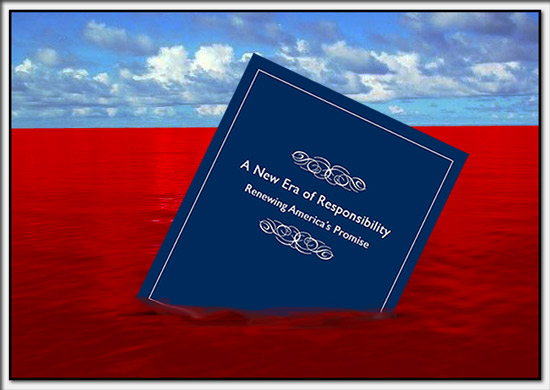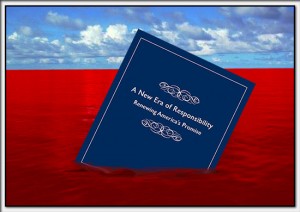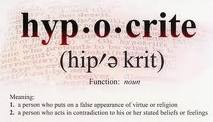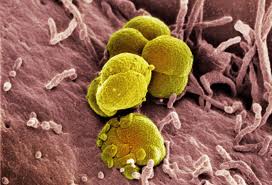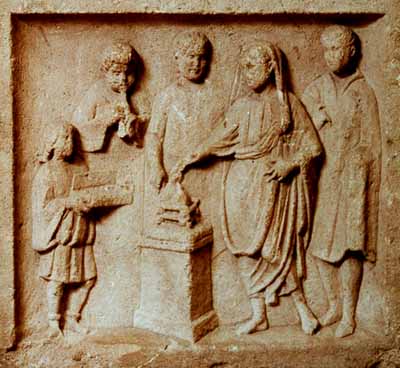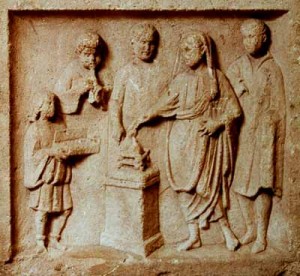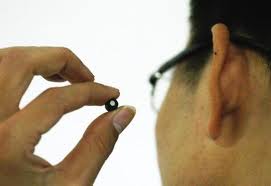
By Jean Jantzen and Jeff Patton
Circumcise a boy baby in San Francisco and you could face a year in jail under a proposed San Francisco bylaw that will be put to voters in November (“San Francisco Could Ban Circumcision,” Tristin Hopper, National Post, May 20, 2011). The article also stated that infant circumcision has been in rapid decline in the United States in recent years. In 2006, 56% of American newborns were circumcised. Just three years later in 2009 that number was only 32.5%. In Canada about 31% of newborns are circumcised each year according to a 2007 survey.
As a grandmother of twenty-seven grandchildren, sixteen of them boys, the question of whether to circumcise or not was hotly debated at our family gatherings. I heard both sides of the argument. If God created little boys with a foreskin why should we mess with nature? On the other hand, Jesus was circumcised so why shouldn’t we follow His example? Which perspective is right? Those family discussions challenged me to look into the circumcision question. 
Circumcision is the surgical removal (cutting off) of the fold of skin that normally covers the glans (head) of the penis. This double layer of skin, sometimes called the prepuce, is more commonly known as the foreskin.
The first mention of circumcision is found in Genesis 17: 11-13 in which God told his friend Abraham: “Every man child among you shall be circumcised. And you shall circumcise the flesh of your foreskin; and it shall be a token of the covenant between me and you.”
Ever since then, periodically, a cutting edge contention has swept various communities, both religious and secular. In the first century A.D. there was a hot debate about circumcision among the religious leaders of the new Christian Church that threatened to split the Church. In Acts 15 the question about whether adult non-Jewish (uncircumcised) adult men needed their penis foreskins’ to be circumcised in order to be spiritually saved was discussed and finally resolved at a major church council.

This famous Jerusalem council decided that while certain parts of the Levitical law were indeed required to be kept by the non-Jewish converts—for instance, abstaining from food sacrificed to idols or eating animals that had been killed by strangulation, not eating any food products made with animal blood, and not practicing sexual immorality [see Leviticus chapters 17 & 18]—the circumcision of adult males was ruled as not being required of the new Gentile converts.
It should be pointed out, however, that this ruling did not change or even discuss the status quo concerning the infant circumcision being practiced by the believing Jewish Christian community, who comprised the majority of church members at that point in time. The Jewish community, both then and now, circumcise a boy baby on the eighth day after birth as the price of admission to the Old Covenant Hebrew community. Even today, any non-Jewish adult male who wants to ethnically become part of the Jewish community under the Old Covenant must still be circumcised. The Jerusalem council, however, decided Gentile converts did not have to become ethnic Jews first in order to become part of the new Messianic/Christian community. These new members could retain their Greek, Roman, or other Gentile ethnic identity and yet still become a Christian. In taking this position the new Christian community insured that it would be seen, eventually, as something more than being merely one among many of the different sects of Judaism. Christianity would become a universal belief system rather than an ethnic identity caught up in this world’s interminable ethnic/nationalistic struggles that have forever dogged humanity.
But this didn’t mean the question of circumcision disappeared from the Church’s concerns. In fact, the issue of circumcision for the new New Covenant Christian community became, if possible, even more important. Why? Because to become a true Christian rather than just a “Christian” in name only, a nominal Christian, there must take place a genuine spiritual circumcision of the heart (repentance and conversion) by an adult convert, whether male or female. Unless this true, spiritual form of circumcision occurred there would be no salvation under the terms of the New Covenant! The Apostle Paul summed this point up by saying the necessary rite of circumcision was no longer external but internal, being a matter of the heart (I Corinthians 7:17-18).

Even though I knew that physical circumcision was no longer a necessary ritual for adult Christians, I continued to believe there must be some health benefits if God commanded his chosen people, the Hebrews, to be circumcised. However, I never stopped long enough to find out if the Biblically specified method of circumcision was the same as the one performed in our hospitals today.
The technique of circumcision initially was only to remove the “preputial tissue” that extends beyond the tip of the glans penis (1700BC-140AD). The mohel (person designated to perform ritual) grasped the foreskin with the fingers, “which pulled the skin of the shaft upwards. The shield was then slid into place, and the tissue above the slit quickly sliced off. This preserved most of the sensitive inner mucous membrane lining of the prepuce.” For two thousand years in this fashion the Abrahamic covenant was fulfilled, males appeared intact and much of their sexual sensitivity was preserved. (George C. Denniston, MD M.P.H. “Modern” Circumcision: The Escalation of a Ritual http://weber.u.washington.edu/~gcd/CIRCUMCISION/v1n1.html).

The Biblical method was quicker than the Gomco Clamp or the Plastibell methods; it took less than one second and the pain only lasting for an instant. Whereas, the modern methods can last up to twenty minutes and the baby may suffer excruciating pain. The two modern methods, which were put into use some sixty years ago, remove much more foreskin than God intended and is a much more radical than the original Biblical circumcision. Why did modern techniques depart so radically from the much more conservative Biblical approach? Most Jewish males are unaware of the “tragic escalation” in technique that had nothing to do with the Covenant. The rabbis agreed to remove even more foreskin to prevent the Jews from trying to pass as Gentiles. (George C. Denniston, MD M.P.H).
According to the19th-century medical point of view, Jews were purported to be morally and physically superior to non-Jews. The reason given—circumcision (cf. Dr. Peter Remondino, History of Circumcision from the Earliest Times to the Present).
A Jewish physician, Dr. Henry Levien of New York wanted to medicalize circumcision, and to remove it from “religiously trained mohels and to put it in the hands of trained surgeons. During the 1890s, medical journals frequently reported the many infant deaths that occurred at the hands of mohels. This movement parallels the removal of midwifery into the hands of the medical profession. Protestant Christians wanted to have what they imagined to be—the moral and physical advantage—in order to “validate scientifically the wisdom of the Bible” (The Right to Our Own Bodies: The History of Male Circumcision in the U.S. by Frederick Hodges and Jerry W. Warner).
But for us in North America who do not believe in this practice, it is interesting to discover—why circumcision? At the turn of the century, circumcision had become a panacea. Amputation of the foreskin was “scientifically proven” to cure and prevent diseases ranging from insanity to epilepsy, malnutrition, hip-joint disease, paralysis, eczema, tuberculosis, headache, hysteria, alcoholism, criminality, and heart disease” (Hodges and Warner). The genitals were thought of as dirty. And, since cleanliness is close to godliness, “increasingly they [the Victorians] identified personal cleanliness with good morals, sound health, and upright character. From this premise it followed that circumcision should be considered preventive medicine and practiced universally as a matter of public health” (David L. Gollaher).
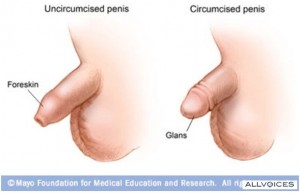
“Why are Jewish women comparatively free of cervical cancer? Medical researchers now agree that this spectacular freedom results from the practice of circumcision in Jewish men—which God ordered Abraham to institute four thousand years ago. A number of recent studies have borne out the fact that freedom from cancer of the womb is not due to factors such as race or food or environment, but wholly to circumcision.” (None of These Diseases S.I.McMillen MD.)
As parents, we only want to do what we feel is best for our child—right? But, unless we research each of these issues for ourselves, how can we make an informed decision? What you decide about circumcision will affect your child for the rest of his life, both physically and psychologically. So you want to be sure you are making the right decision.
First, let’s examine the part we want to have removed and what its function is?
The foreskin is one of the most erotically sensitive parts of the penis. It represents 50% to 80% of the skin system of the penis, depending on the length of the penile shaft. It is a unique and highly complex organ. The average foreskin has over three feet of veins, arteries, and capillaries, 240 feet of nerve fibers, and over 1,000 nerve endings. If unfolded, the adult foreskin would measure 20 to 30 square inches. The foreskin plays a large role in sexual function. The foreskin has glands that produce a natural moisturizer and lubricant called smegma. Smegma serves the same purpose as tears do in the eye: it keeps everything moist, clean, and lubricated (by Frederick Hodges and Jerry W. Warner).
At birth, the foreskin is tightly attached to the glans or head of the penis. It is like the skin attached to our hand. In order to circumcise or remove the foreskin it must be separated from the glans by force. There are many articles attesting to the fact that this is an excruciatingly painful procedure. According to George C. Denniston, MD, M.P.H. “At birth, the separation of the foreskin from the glans has just begun. The newborn’s penis is, of course, not yet fully developed. Not only does circumcision interfere with its development, but it requires that the surgeon tear the skin from the sensitive glans to permit removal. As a result, scarring occurs, the surface of the glans thickens, and the urinary opening often gets smaller” (Unnecessary Circumcision).
If left naturally, the infant’s intact foreskin will protect the penis from urine and feces and will gradually separate itself from the glans. It cannot be drawn back and trying to do so will injure and cause unnecessary scarring. By the age of four or five, and sometimes much later, the foreskin will be able to be retracted in order to expose and cleanse the head of the penis.
If you decide to circumcise your baby shortly after birth, or later on, you should know what methods are used and how much of the foreskin will be removed. Have you asked your doctor what he knows about circumcision? We know that on the eighth day, Vitamin K is at its highest level. Vitamin K helps the blood to clot. If baby boys are circumcised on this day it prevents excessive bleeding that may occur if they are circumcised right after birth, which the doctor’s usually do for their convenience. “Four thousand years ago, when God initiated circumcision with Abraham, He said, “And he that is eight days old shall be circumcised. “Abraham did not pick the eighth day after many centuries of trial and error experiments….it was a day picked by the Creator of vitamin K.” (None of These Diseases S.I.McMillen MD.)
When the doctor does this procedure he will use either of the following two methods. “The Gomco clamp is a metal cone which fits over the glans and lies between it and the prepuce. The distal foreskin is then removed. The Plastibell consists of a plastic cone which fits over the glans. The foreskin is stretched over this and a ligature is applied at the base. The distal foreskin is excised. The base of the Plastibell is left in situ; the rest of the cone is removed. This base falls off in a few days” (The Problem of Infant Routine Circumcision). If our doctors are not trained properly, or have little knowledge of the function of the foreskin, how do they know how much foreskin is too much or too little? Ask questions. Be informed. Tell the physician how much skin to remove.
We need to be present during the procedure and tell him (in fact, demand) our preferences. Remember when the father was not allowed to be with the mother during the birthing process. In the twenty-first century it would be unthinkable to not give comfort and support to a woman in labor. How much more should we support and comfort our newly-born child during the circumcision process? If we cannot gather the courage to be with our son during this procedure, maybe it would be better to not have the circumcision done.
Dr Pollock, Canada’s most experienced circumcision provider, has safely completed over 30,000 infant circumcisions over the last two decades taking less than 30 seconds to perform while virtually bloodless and painless. He says circumcision reduces risk of urinary tract infection, penile cancer, sexually transmitted diseases and a 60% reduced risk for HIV. (pollockclinics.com) Another doctor responded this way in the National Post to the circumcision controversy : “I am a retired physician and father of two boys. I agree with Dr. Neil Pollock that the need for circumcision is not in question, and it is best done shortly after birth. Just as the mother produces endorphins during labour that helped her tolerate the pain of childbirth, her newborn son also has circulating endorphins ameliorating the pain produced by a not-so-gentle arrival process.”(Don’t Wait to Cut Dr. Warren Hindle, National Post, April 9,2011)
To conclude, the spiritual significance of circumcision is what is even more important for us as Christians today. God’s word thunders out over the millennia:

12 “And now, Israel, what does the LORD your God require of you, but to fear the LORD your God, to walk in all His ways and to love Him, to serve the LORD your God with all your heart and with all your soul, 13 and to keep the commandments of the LORD and His statutes which I command you today for your good? 14 Indeed heaven and the highest heavens belong to the LORD your God, also the earth with all that is in it. 15 The LORD delighted only in your fathers, to love them; and He chose their descendants after them, you above all peoples, as it is this day. 16 Therefore circumcise the foreskin of your heart, and be stiff-necked no longer. Deuteronomy 10:12-16 NKJV
It is interesting to note that from the LORD’s point of view being “stiff-necked” is synonymous with uncircumcision (Acts 7:51). He said, “Circumcise your heart and the heart of your offspring, so that you will love the LORD your God with all your heart and with all your soul, that you may live,” Deuteronomy 30:6 (ESV).
The bottomline with physical circumcision is this: our bodies are temporary and physical life is short. Physical circumcision is not essential for salvation for those living under the New Covenant. However, physical circumcision does provide some potent and scientifically demonstrable health benefits as does applying the spiritual understanding that comes from practicing the rest of the “principles for living” found in God’s commandments, statutes, and judgments, such as refraining from eating blood or sexual immorality.
Remember what the Apostle Paul said in Galatians 3:29, “And if you are Christ’s, then you are Abraham’s seed, and heirs according to the promise.” If you are parents expecting a child and you value your heritage as the physical or spiritual descendants of Abraham then you will want to follow Abraham’s example. God said of Abraham,
“I will cause your descendants to become as numerous as the stars of the sky, and I will give them all these lands. And through your descendants all the nations of the earth will be blessed. 5 I will do this because Abraham listened to me and obeyed all my requirements, commands, decrees, and instructions.” Deuteronomy 26:4-5
The decision is up to you!
http://www.blumenthalclinic.com.au/content_common/pg-circumcision-procedure-sydney.seo
Circumcision Information
•
As a specialist Obstetrician, Dr Blumenthal gives you expert advice on this operation.
• Eliminates the risk of phimosis, which affects 1 in 10 older boys and men. This condition refers to a tight foreskin that cannot be pulled back fully, so making cleaning under it, and passing urine, difficult.
• Reduces by 3-fold the risk of inflammation and infection of the skin of the penis. One in 10 uncircumcised men gets inflammation of the head of the penis and foreskin.
• Over 10-fold decrease in risk of urinary tract infection. Whereas risk of this is only 1 in 500 for a circumcised boy, 1 in 50 uncircumcised male infants will get a urinary tract infection.
• Over 20-fold decrease in risk of invasive penile cancer.
• One in 600 uncircumcised men gets penile cancer, which usually requires penile amputation or disfiguring surgery.
• Uncircumcised men have 1½ – 2 times the risk of prostate cancer, which affects 1 in 6 men.
• Reduces by approximately 3 to 7 fold the risk of getting HIV (AIDS), during sex with an infected person.
• Circumcision also affords substantial protection against thrush as well as sexually transmitted infections such as papilloma (wart) virus and syphilis.
• Circumcision reduces by up to 5 times the risk of the man’s female partner being infected by Chlamydia or getting cervical cancer (which is caused by human papillomavirus). The load of infectious bacteria and viruses that accumulate under the foreskin is delivered into the female genital tract during sex.
• If not circumcised soon after birth, up to 10% will later require one anyway for medical reasons.
• Credible research shows that most women prefer the appearance of the circumcised penis. They also prefer it for sexual activity. Hygiene is one reason; increased contact of the penis with the vaginal wall, and stimulation, are others.Eliminates the risk of phimosis, which affects 1 in 10 older boys and men. This condition refers to a tight foreskin that cannot be pulled back fully, so making cleaning under it, and passing urine, difficult.
• In general, sexual function and sensation are the same or better in circumcised men. The problem of overly tender sensitivity of the head of the penis experienced by most uncircumcised men is virtually eliminated.In general, sexual function and sensation are the same or better in circumcised men.
 Mayer’s book was all about how the Nazis used the human nature and cultural characteristics of the German people in order to manipulate and gradually subvert them in order to ensure their acquiescence to, and then compliance with their evil program of world war and genocide.
Mayer’s book was all about how the Nazis used the human nature and cultural characteristics of the German people in order to manipulate and gradually subvert them in order to ensure their acquiescence to, and then compliance with their evil program of world war and genocide.

 Any student of modern European history over the last 300-400 years knows that whenever there has been a strong continental European power seeking to assemble a coalition of European states under its hegemony, whatever the reason, the end result has always been disastrous for regional peace and freedom. Has human nature changed? Can a leopard change its spots? Are the Germans still Germans, the French still French, and the United Kingdom still British?
Any student of modern European history over the last 300-400 years knows that whenever there has been a strong continental European power seeking to assemble a coalition of European states under its hegemony, whatever the reason, the end result has always been disastrous for regional peace and freedom. Has human nature changed? Can a leopard change its spots? Are the Germans still Germans, the French still French, and the United Kingdom still British?





